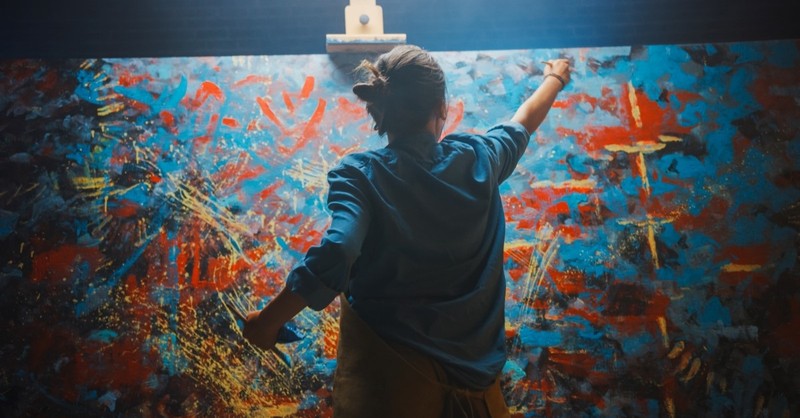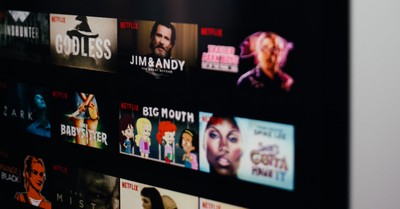How the Church Can Embrace Artists and the Arts, Part II
- J. Scott McElroy Author, Finding Divine Inspiration
- Updated Dec 02, 2022

In Part One of this article I asked, "How can we open up our churches and our minds so that more people can get involved in the creative process, yet continue to raise the quality of our art (painting, music, dance, sculpture, etc)?"
It's an important question, and in just addressing it we'll move closer to the proper place of the arts in the church.
There are a number of reasons why more protestant churches haven't embraced the arts. Many pastors and leaders, while witnessing the influence of the arts on the culture, are not aware of the vital role in the maturing of the body of Christ the arts have (see the blog post "Arts and the Maturity of the Church") or how effective the arts can be in conveying God's messages to their communities. If they do grasp that, more questions come up… "How do you find quality Christian artists who will get involved or contribute", "What happens if someone gets offended because we don't want to use their art?", or "How do we deal with the people who say God told them to make something, yet it doesn't appear to be up to a displayable standard?".
I believe part of the answer to these questions is in creating a system in our churches to nurture and encourage creativity. The Vineyard Boise "VineArts" program does a wonderful job with this, providing training, encouragement and opportunity for all skill levels. Another church in Pennsylvania, Living Word, provides affinity groups for artists at different levels of skill and experience. There might be a group where people exploring their creativity can grow, an intermediate group of those with some experience, and a group for working professional artists. As artists grow they can move through that system.
People of all artistic skills levels can get involved in outreach and ministries, like nursing home performances and exhibits. Artists at the Boise church use the arts to show compassion to Alzheimers patients. Many who have lost their ability to express themselves verbally can spend an afternoon experiencing the freedom of expression that painting can offer. By facilitating this, the artists give a wonderful gift to the patient and their family. The patient's work is framed and presented to the family, providing an unexpected thing of beauty in the middle of the struggle and strain of the disease. This is one of the many ways that the arts can uniquely convey the love of God to our communities.
A way to keep the quality of work shown or performed in your church high is to have juried exhibitions and events. Works that pass a jury might be displayed in your public areas or become part of a permanent collection. The jurors can be anonymous—not the pastor!—people like art teachers and art professionals, possibly from outside your congregation. This way people know that anyone is welcome to make art, but you have to go through the jury process to have your work hung or performed in these areas. If you don't make it this time, keep trying. This kind of system can cut down on personal offences and set a standard. It also facilitates a way to disciple artists and help them grow. When an artist doesn't pass the jury, we can encourage them to separate what they do from their identity as a person, as well as come to grips with the fact that not everything they create is meant to be displayed. Going through these kinds of processes develops character and patience.
And for those who aren't ready for the jury process, or are exploring their creativity, you might design a gallery that is not juried and open to all, with paintings or works displayed in a uniform, professional matter for a set length of time. This openness and inclusion will have a wonderful effect on budding artists and their church communities.
In my experience, there are many frustrated "creative types" in our churches looking for ways to use and grow in their abilities for the glory of God. We have to find ways to involve, encourage and disciple them. These spiritually sensitive people will find their real fulfillment as artists and humans and as they take their place in the Body of Christ. The Body will be incomplete while the arts and artists are missing from it and the beauty and creativity of God's personality will remain partially veiled. As artists flourish the Body will flourish. As they are renewed, the Body will be renewed.
Of course, for these systems to work smoothly, there needs to be someone running them. From talking to pastors and leaders, there is a great need for artists/leaders. If you are a pastor, I encourage you to pray that God will bring someone to you. I believe He will do this in every church that has a desire to grow in the integration of the arts. He wouldn't give this desire without providing for it.
In addition to the church websites embedded in this article, there are many other resources available to help in the process of integrating the arts and artists into your church. CIVA (Christians In the Visual Arts) has a gallery handbook available here. The Willow Creek Association provides the TowardWonder.org website for the arts. IAM (International Arts Movement) is great at setting standards for artists and their work. I'm always looking for more resources, so if you know of a helpful site on the arts, please pass it along. You may email me at scott@FindingDivineInspiration.com.
May God speed the New Renaissance that is rising!
J. Scott McElroy is the author of Finding Divine Inspiration: Working with the Holy Spirit in Your Creativity (2008, Destiny Image). He is a writer, voiceover artist, visual artist, and award-winning radio producer who is passionate about redeeming the arts through collaborating with the Holy Spirit. As a voiceover artist, he hosted the Animal Planet TV series "Wildlife Journal" from 2004-2007. His voice is heard on national TV commercials, video games, websites and more. He lives in Indianapolis, Indiana with his wife Danielle daughter Hailee and son Kaia.
Visit Scott's Finding Divine Inspiration blog at jscottmc.wordpress.com.
Original publication date: October 29, 2009

5 Great Books about Christian Artists
1. Of Fiction and Faith, edited by W. Dale Brown
The late W. Dale Brown worked for decades as Calvin University’s English professor and director of its Festival of Faith and Writing. Here, he discusses the need for religious writing that has substance and quality, even if it doesn’t always sell well. He provides 12 interviews with writers who don’t fit easily in the “Christian writing” or “secular writing” camp, discussing their lives and work. Frederick Buechner talks about being an ordained Presbyterian minister who writes complicated stories about complicated saints. Doris Betts talks about writing religious ideas in novels without making everything sappy or sentimental. Robert Goldsborough talks about writing mystery novels as a Christian. Other writers include Peggy Payne, Denise Giardina, and Robert Olen Butler.
2. Hammers and Nails by Matthew Dickerson
Mark Heard never reached the fame of Rich Mullins or Larry Norman, but many would argue he’s equally important. Matthew Dickerson tells the surprising story of how Heard almost became a professional recording artist before he was 21, his time with Norman’s ill-fated Solid Rock Records, and his ultimate choice to produce his own music. Dickerson takes an honest look at the tragedy in Heard’s life (that so many Christians didn’t care for his nuanced lyrics and crafted sound) while admitting some of Heard’s struggles were bad timing. Throughout, he pushes readers to consider what “Christian music” means and how to make it well.
3. Songs from the Silent Passage, edited by Matthew Dickerson and Anne M. Doe Overstreet
A pastor-turned-novelist, the late Walter Wangerin, Jr., seemed to write everything. His early fantasy novels were based on The Canterbury Tales. His memoirs covered everything from being a pastor’s son to his journey with cancer. His historical fiction ranged from a novel about Paul to the story of St. Julian. This collection of essays, written by fellow members of the Chrysostom Society, considers the wide variety of Wangerin’s work and what made him so memorable no matter which genre he turned to.
4. Subversive by Crystal Downing
There are several excellent books about Dorothy L. Sayers’ faith and writing, but some miss an important fact: her willingness to do something shocking for good. Downing highlights Sayers’ willingness to be subversive, most famously when she wrote The Man Born to Be King, which dared to tell Jesus’ story in modern dialogue. Downing considers how Sayers’ refusal to show Christianity as tame and easy to follow may make her more relevant than ever today.
5. A Light So Lovely by Sarah Arthur
Arthur’s biography of Madeleine L’Engle takes an honest look at a woman who unexpectedly found God, who wrote books that didn’t fit easily in the “secular” or “Christian” publishing categories, and who frequently got in hot water because other Christians didn’t like her willingness to embrace paradox. Using interviews with L’Engle’s friends like Luci Shaw and Philip Yancey, as well as writers she influenced like Nikki Grimes and Sara Zarr, Arthur shows how L’Engle’s complexities made her an inspiration and resource for many.
(Excerpted from "50 Books about Christian Art" by G. Connor Salter)
If you enjoy this article, you may enjoy the following:
50 Great Books about Christian Art
How Should Christians Relate to the Arts?
20 Great Books about Christian Music
What Does the Bible Say about Art?
Is It Okay for Christians to Listen to Secular Music?
Why Christians Must be Involved in the Arts
God, the Arts and Us: Communicating the Creator's Beauty
Photo Credit: Getty Images/gorodenkoff




















